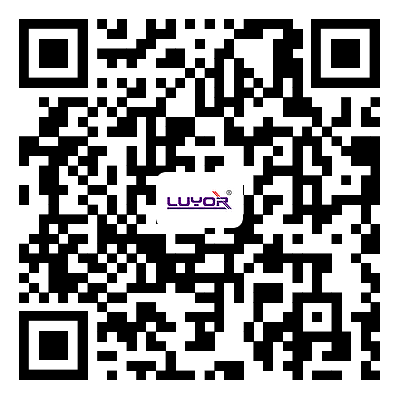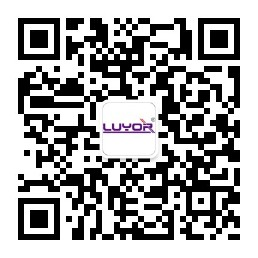法医光源的应用
Forensic Light Source Applications
The value that a forensic light source will bring to your department will be
measured by the significant increase in the number of suspects apprehended and
successfully prosecuted.
What is a Forensic Light Source?
A forensic light source is a crime scene investigator's and lab technician's
tool for enhancing observation, photography and collection of evidence including
latent fingerprints, body fluids, hair and fibers, bruises, bite marks, wound
patterns, shoe and foot imprints, gun shot residues, drug traces, questioned
documents, bone fragment detection, etc.. It provides more sensitivity than
traditional methods thus increasing the amount of evidence uncovered and the
quality of the evidence photographed and collected.
A forensic light source is made up of a powerful lamp containing the
ultra-violet, visible and infrared components of light. It then filters down the
light into individual color bands (wavelengths) that enhance the visualization
of evidence by light interaction techniques including fluorescence (evidence
glows), absorption (evidence darkens), and oblique lighting (small particle
evidence revealed).
Utilizing forensic light source techniques allows the latent print to be
detected with much more sensitivity (10-100 times more!) than the conventional
method of black powder dusting and lifting.
Latent Fingerprint Detection/指纹检查
The primary application of a forensic light source is for enhancing the
detection of latent fingerprints. The use of fluorescent enhancement processes
that compliment a light source greatly increases the types of surfaces from
which a latent fingerprint can be detected. Consider the difficulties of dusting
and lifting a print off of the following surfaces: thin plastic bags, rigid duct
tape, thin aluminum foil, heavily grained wood, concrete wall, brick, printed
glossy magazine pages, paper products, etc. Using traditional methods,
fingerprint evidence on these and other types of surfaces may go undetected or
even dismissed because they could not be detected with enough detail. Forensic
light source techniques have been successfully utilized for revealing latent
prints on these and many other types of textured surfaces, backgrounds which
mask ridge detail, fragile surfaces, and contaminated surfaces. Different color
bands (wavelengths) are required for processing different types of surfaces
making a forensic light source with tunable or multiple color bands
(wavelengths) a coveted tool for any crime scene investigator. In many cases the
background surface will also glow under light source illumination. In these
cases it is necessary to tune to a color band (wavelength) of light that causes
the print to glow and not the background. The quality and quantity of evidence
revealed is proportional to the output power and the extent of color tunability
of the light source. This ability is exclusive to a forensic light source, UV
lights or Blue lights cannot offer this selectivity due to their limited number
of color bands (wavelengths) and low power. 
Since fluorescent techniques are very sensitive, only trace amounts of
fluorescent powder are required when dusting for prints at a crime scene. It
therefore leaves the scene much cleaner than when using black powder.
Body Fluids/体液
Since body fluids like semen, saliva, and vaginal fluids are naturally
fluorescent, the use of a light source offers a unique method for locating them.
A crime scene investigator can narrow down the specific locations of stains for
collection instead of testing entire, large pieces of evidence such as a
mattress, a carpet, a sheet, an article of clothing, etc.. The dried body fluids
will actually glow under the light source illumination. Although the body fluids
will fluoresce under an ordinary UV black light, many articles on which you
would find them including clothing and sheets will also glow and deter their
detection. It is therefore necessary to tune to visible color bands
(wavelengths) to eliminate the background interference. Considering you will be
searching for body fluids on high profile, capital crime cases, the more body
fluid evidence you can reveal the better. Again, the more powerful and more
tunable your light source, the more evidence you will uncover. Although blood
does not glow in the visible range, it has a unique color band (wavelength)
under which the blood stain will darken to enhance its contrast by approximately
4 times. This is most effective in photographing blood prints because more of
the detail of the blood print will be revealed by the enhanced contrast. Many background surfaces glow under UV light and therefore a simple UV Black
light will not yield the quality and the quantity of evidence that can be
achieved with a tunable or multiple color band forensic light source.
Hair & Fibers/头发和纤维
Two light illumination methods can be employed to locate hair and fibers with a
forensic light source. First, oblique or parallel lighting of a surface such as
a floor or carpet with a strong white light (the more powerful the better) will
reveal small particles like hair and fibers for collection. Second, some hair
and fibers will also glow under UV or visible light and will stand out strongly
for collection. For the best chance of collecting the maximum number of hair and
fibers at the crime scene, you need a powerful light source that offers strong
White light illumination as well as strong UV and visible color bands
(wavelengths); all of which are available only in a forensic light source.
A blue filtered flash light is limited by a single blue color band and even more
severely by the limited power output of a flash light.
Bruises / Bite Marks / Pattern Wounds瘀伤/咬痕/伤口
Bite Mark
A tunable or multiple color band (wavelength) forensic light source reveal
bruise and patterned wound details that are invisible under normal white light
illumination. Details of a bruise pattern in a suspects palm can link a suspect
to a weapon. Furthermore, details of a bruise on a victim, for instance, a bite
mark or a shoe mark, can link a suspect to the victim. Multiple color bands
(wavelengths) are necessary because different colors penetrate to different
depths within the skin and therefore depending on the depth of the bruise or
wound you will need to vary the color band (wavelength) of the instrument. Deep
wounds may require infrared illumination to get enough skin penetration.
Only a forensic light source gives you the versatility of UV, visible, and IR
color bands for enhancing bruise or wound pattern detail.
Questioned Documents文件检查
Inks have different formulations, even within the same apparent color type. A
tunable forensic light source can be used to identify slight variations in ink
type by viewing ink responses as the color of the light is tuned through the
visible and infrared regions. Regardless of the skill of the forger, this
examination would reveal that 2 different pens were used on the document.
Typical applications of our Forensic Lights
Fluorescence (Ultraviolet, all Visible wavelengths, Infrared), Reflectance, Absorption used for: Latent fingerprint identification, Crime Scene Search and evidence collection, Forensic photography and imaging, forged/questioned documents, counterfeit, biology & serology (detection of semen, blood (in natural absorption mode at 415nm or in fluorescence mode after treatment with the Fluorescein spray), saliva, vaginal fluids, sweat, feces), footprint, gun shot residues, bruises, bite marks, fibers and hair, bone fragments.


上海路阳仪器有限公司
地址:上海市松江区泗砖南路255弄120号
邮箱:china@luyor.net
销售微信号:15317565658
咨询电话:021-64195798
QQ:574242291
技术微信号:18918042916

 微信咨询
微信咨询 微信关注
微信关注